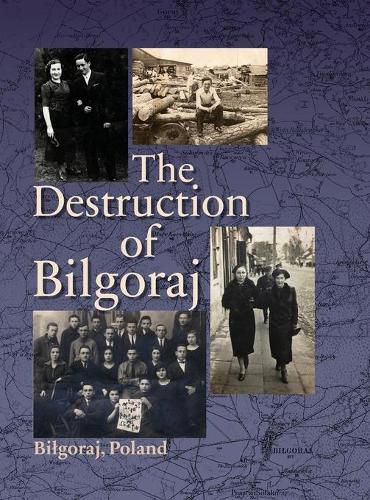Readings Newsletter
Become a Readings Member to make your shopping experience even easier.
Sign in or sign up for free!
You’re not far away from qualifying for FREE standard shipping within Australia
You’ve qualified for FREE standard shipping within Australia
The cart is loading…






This title is printed to order. This book may have been self-published. If so, we cannot guarantee the quality of the content. In the main most books will have gone through the editing process however some may not. We therefore suggest that you be aware of this before ordering this book. If in doubt check either the author or publisher’s details as we are unable to accept any returns unless they are faulty. Please contact us if you have any questions.
We know Bilgoraj’s river and forest from the stories of I.B. Singer, who spent his early adulthood here.
Jews lived here since the late 14th century, and before the First World War, made up half its population. They owned grain and lumber mills, and worked as merchants, shoemakers, smiths, tailors, bakers, sieve makers, and printers. (The Kronenberg Press was known throughout Europe for its Hebrew books.) During the early 20th century, the community
supported a synagogue, dozens of schools, a public kitchen, an orphanage, a labor union, four Zionist parties, six theatre
groups, and two libraries.
In October 1939 Nazi soldiers entered the town and began a program of beatings, killings, and forced labor. In June 1940 a
ghetto was created; deportations to the camps began in spring 1942. With the liquidation of the ghetto and its last residents
in January 1943, Jewish Bilgoraj ceased to exist.
But not to the creators of this book. On their behalf, editor Abraham Kronenberg wrote:
We worked hard and produced a picture of our city and its dear Jews, its parties, institutions, and personalities. May we not forget what we had, and what will never again be.
$9.00 standard shipping within Australia
FREE standard shipping within Australia for orders over $100.00
Express & International shipping calculated at checkout
This title is printed to order. This book may have been self-published. If so, we cannot guarantee the quality of the content. In the main most books will have gone through the editing process however some may not. We therefore suggest that you be aware of this before ordering this book. If in doubt check either the author or publisher’s details as we are unable to accept any returns unless they are faulty. Please contact us if you have any questions.
We know Bilgoraj’s river and forest from the stories of I.B. Singer, who spent his early adulthood here.
Jews lived here since the late 14th century, and before the First World War, made up half its population. They owned grain and lumber mills, and worked as merchants, shoemakers, smiths, tailors, bakers, sieve makers, and printers. (The Kronenberg Press was known throughout Europe for its Hebrew books.) During the early 20th century, the community
supported a synagogue, dozens of schools, a public kitchen, an orphanage, a labor union, four Zionist parties, six theatre
groups, and two libraries.
In October 1939 Nazi soldiers entered the town and began a program of beatings, killings, and forced labor. In June 1940 a
ghetto was created; deportations to the camps began in spring 1942. With the liquidation of the ghetto and its last residents
in January 1943, Jewish Bilgoraj ceased to exist.
But not to the creators of this book. On their behalf, editor Abraham Kronenberg wrote:
We worked hard and produced a picture of our city and its dear Jews, its parties, institutions, and personalities. May we not forget what we had, and what will never again be.